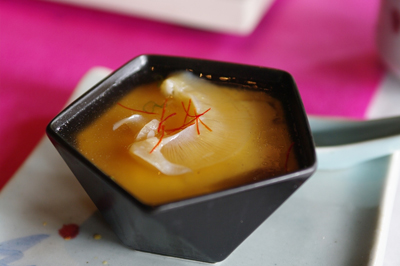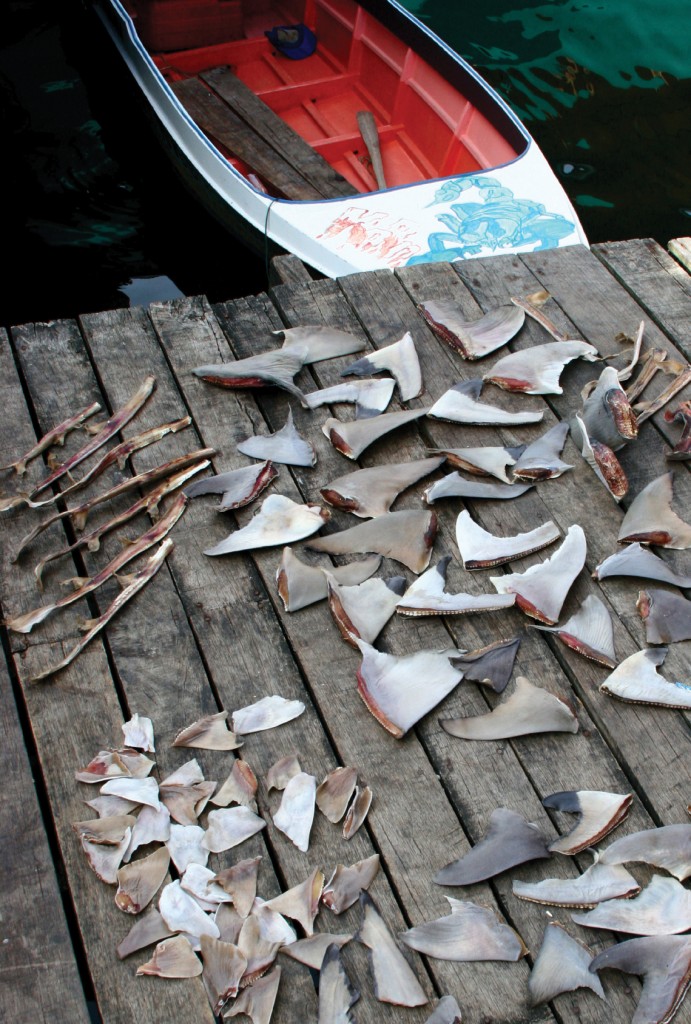Last Friday, October 7, California Governor Jerry Brown signed Assembly Bill 376, banning the possession and sale of shark fins in California. The signing of the bill is the conclusion to years of petitioning, lobbying, and advocating by organizations and individuals concerned about the fate of sharks in our ocean.
 The fins, prized for making Shark Fin soup, are sliced off an estimated 73 million sharks each year. After finning live sharks, fisherman commonly throw the finless sharks into the water to die, as there is little demand for shark meat itself. The sharks then either succumb to predators or suffocate, as they need to swim continuously to breathe.
The fins, prized for making Shark Fin soup, are sliced off an estimated 73 million sharks each year. After finning live sharks, fisherman commonly throw the finless sharks into the water to die, as there is little demand for shark meat itself. The sharks then either succumb to predators or suffocate, as they need to swim continuously to breathe.
“The practice of cutting the fins off of living sharks and dumping them back in the ocean is not only cruel, but it harms the health of our oceans,” Brown wrote in a statement. “Researchers estimate that some shark populations have declined by more than 90 percent, portending grave threats to our environment and commercial fishing. In the interest of future generations, I have signed this bill.”
 The California market for shark-fin soup is the largest market outside Asia, and about 85% of U.S. shark fin consumption occurs here, where dried shark fin can sell for more than $2,000 a pound. It is estimated that more than 7 tons of shark fins were imported last year into California. Hawaii, Washington and Oregon have already banned the sale of shark fins.
The California market for shark-fin soup is the largest market outside Asia, and about 85% of U.S. shark fin consumption occurs here, where dried shark fin can sell for more than $2,000 a pound. It is estimated that more than 7 tons of shark fins were imported last year into California. Hawaii, Washington and Oregon have already banned the sale of shark fins.
“Californians can be proud of their role in giving these remarkable top predators a chance to recover their populations and helping to restore balance to our oceans,” said Assemblyman Jared Huffman, D-San Rafael, who co-authored the bill with Assemblyman Paul Fong.
Brown signed another bill by Fong, AB853, which will allow existing inventory of shark fins to be sold until July 1, 2013. It also makes it clear that sport fishermen who catch a shark can still eat the fins, or have the shark stuffed and mounted as trophies.
Shark Finnng Facts:
– More than half of all worldwide traded shark fins go to Hong Kong and mainland China. The market is still growing 5-8% each year.
– In 1991, the percentage of sharks killed by U.S. longline fisheries in the Pacific Ocean for finning was approximately 3%, but by 1998, that percentage had grown to 60%. Between 1991 and 1998, the number of sharks retained by the Hawaii-based swordfish and tuna longline fishery had increased from 2,289 to 60,857 annually, and by 1998, an estimated 98% of these sharks were killed for their fins.
– In 1980, about 3,000 tons of shark fins traded worldwide. In 2004 it was 22,000 tons (although this estimate is almost definitely a fraction of the real take).
– The shark finning industry is valued at $1.2 billion.
– Australian naturalist Steve Irwin was known to walk out of Chinese restaurants if he saw shark fin soup on the menu. In 2006, NBA All-Star Yao Ming pledged to stop eating shark fin soup at a news conference.
Tell us what you think! Post a comment below and share your thoughts…
SUBSCRIBE TODAY! Our next issue mails in 3 weeks!
For only $19.95 you’ll get a great, full-color dive magazine for a full year.
